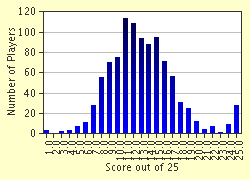Quiz Answer Key and Fun Facts
1. In which of these species of deer (family Cervidae), does the female have antlers?
2. Which has the most bones in their skull?
3. Who has teeth in their upper jaw only?
4. Who has the most bones in their neck?
5. Who has only two teeth?
6. Whose horns are placed at the back of their skull?
7. What is a rhinoceros' horn made of?
8. Mice, chipmunks, beavers and porcupines are all members of the order, Rodentia...rabbits and hares are not. How come?
9. The word "skeleton" comes from the Greek for...
10. Which of these critters has hollow teeth?
11. All snakes have round pupils.
12. Grasshoppers, crickets, ladybug beetles and butterflies can all be called "True Bugs".
13. Sponges are animals.
14. Only birds have feathers.
(Besides pillows, exotic dancers, shire horse hoof hair, arrows and crossbow bolts, moth antenna, fly fishing hooks, badminton shuttle cocks, Sitting Bull's war bonnet, etc., etc.)
15. Who ALWAYS has sharply pointed, backward facing teeth?
16. The tusks of a walrus are...
17. Can turtles leave their shells?
18. Penguins don`t have feathers. They have tough, rubbery skin over a thick layer of blubber.
19. The largest, (living), shark species has the smallest teeth.
20. Can birds still fly without their tail feathers?
21. The smooth, white oval "cuttlefish bone" that cage-birds like to peck at is really made from...
22. Besides shape, is there any difference between antlers and horns?
23. Like walruses, some deer have tusks.
24. Which of these porcupines can shoot their quills up to 8 feet away?
25. Ivory comes from an elephant`s...
Source: Author
thumbsucker
This quiz was reviewed by FunTrivia editor
crisw before going online.
Any errors found in FunTrivia content are routinely corrected through our feedback system.

